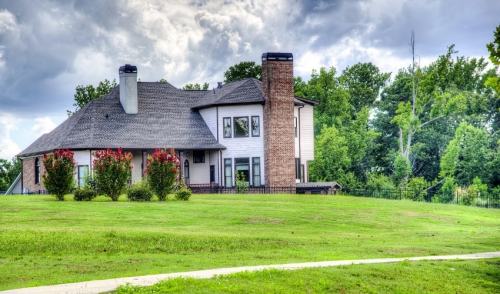
Starter Plants for Landscaping
Whether you are a new homeowner, a novice gardener or just interested in improving your yard, it can be overwhelming to choose the best plants for your landscaping. Fortunately, there are tried-and-true plants that can look great in nearly any yard and are easy to nurture no matter how green or brown your thumb may be.
Plan Before You Plant
If you want your landscape to look its best, it is critical to develop a long-term plan before you choose your first plant. This will help you design a suitable landscape that you will enjoy, whether you want a practical vegetable garden, a showstopping flowerbed, outdoor meditation space, wildlife-friendly habitat, a hard-wearing play area or any other type of landscaping.
- Map It Out
First, draw a diagram of your yard, noting the position of buildings, pathways, driveways, walls, fences and other structures, as well as significant slopes, dips or existing plants you plan to keep. This will give you a template for your landscaping so you can better gauge what space you have to work with and how different parts of your landscape will come together.
- Get the Dirt on Dirt
It can be helpful to have your soil tested and evaluated so you can choose plants that will thrive in the nutrition it provides. A chemical test can determine your soil's pH level and nutrient levels, but you will also want to determine how rocky or sandy the soil is, how much clay may be present and what its water retention rate is. All of this information can be useful as you plan an efficient, easy-to-care-for landscape.
- Let the Sun Shine In
Sunlight is critical to the health of all the plants and turf in your landscape. Take time to note how much sunlight your yard gets, particularly at different times of day. Consider how shadows change and how any plants you add to the yard may change those light levels, such as providing greater shade in some areas.
- Climate Consideration
Learn what your gardening or planting zone is, and take into account your local climate before choosing plants. Some plants require periods of winter dormancy to thrive, while others cannot tolerate freezing temperatures, for example. Also consider different rain or water levels in different seasons so you can choose plants appropriately.
Choosing Plants
Once you know more about your yard and your vision for your dream landscape, you can begin to select plants to achieve that dream. There are a variety of factors that must be considered for each plant, however, including…
- Mature Size: Consider both the total height and width of plants to be sure they will fit where you want to put them, without needing excessive pruning or removal in a few years as they reach their mature growth.
- Colors and Shapes: Many people opt for plants with stunning colors or unique structures to add visual interest to the yard. Choose plants that will provide that performance year-round, such as lovely spring blooms followed by bright summer color, a brilliant autumn show and even great winter shapes.
- Nutritional Needs: If you choose a tropical plant that needs excellent drainage and sandy soil but you only have thick clay soil in your yard, it will never thrive. Instead, consider the nutrition and condition of your yard and which plants will work best so you can spend more time enjoying your landscaping rather than struggling with impossible problems.
- Care Requirements: Different plants require different pruning and maintenance, and they also have different susceptibilities to pests, diseases and environmental stress. Research your favorite plants to be sure you are willing to provide the care they need to look their very best.
In general, it is best to start with plants that are native to your region and climate. Native plants are already adapted to the unique needs of your area and will be more resilient, and they generally require less supplemental care such as extra watering, fertilizing or pest control.
Top Starter Plants to Try
No matter where you are or what type of landscape you hope to design, there are some top-performing plants that can look great and should be welcome in your yard.
- Trees: Trees provide a visual anchor to your landscape as well as help shade the yard and act as a windbreak for more delicate plants. Choose both deciduous and evergreen trees for your yard if possible, and use them to help cover large areas. Spruce, maple and redbud trees are hardy favorites, and you can also look for both flowering and non-flowering trees.
- Hedges: Bushes, shrubs and hedges make excellent borders and help disguise fences and walls. Options that generally take less work and deliver a powerful impact include euonymus, hydrangea, lilacs, arborvitae, roses, junipers and boxwoods.
- Grasses: Ornamental grasses can be a powerful statement in your yard and are great for filling in bare areas with bold vertical interest. Look for fountain grasses, fescues and oatgrasses in single color or variegated varieties.
- Flowers: Many annual and perennial flowers are ideal for all types of landscapes, and bulbs such as daffodils, tulips and daylilies are especially great for beginners. Other popular choices include coneflowers, sedums, black-eyes susans, cosmos and chrysanthemums.
Whatever type of landscape you hope to achieve, there are many great starter plants to choose from. With proper planning and careful consideration of those plants' needs, you can select the perfect trees, shrubs, grasses and flowers to begin to build your dream landscape.


